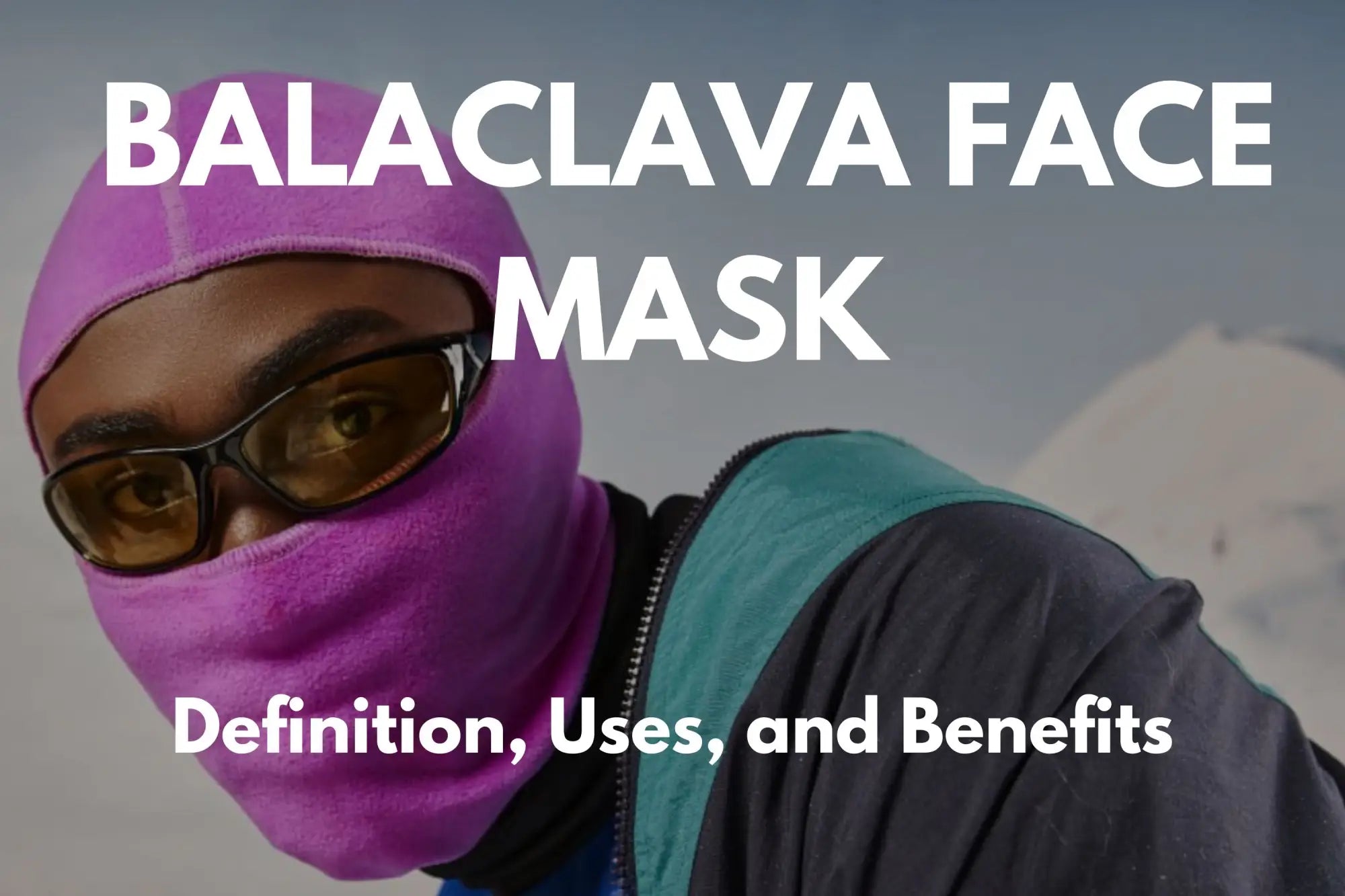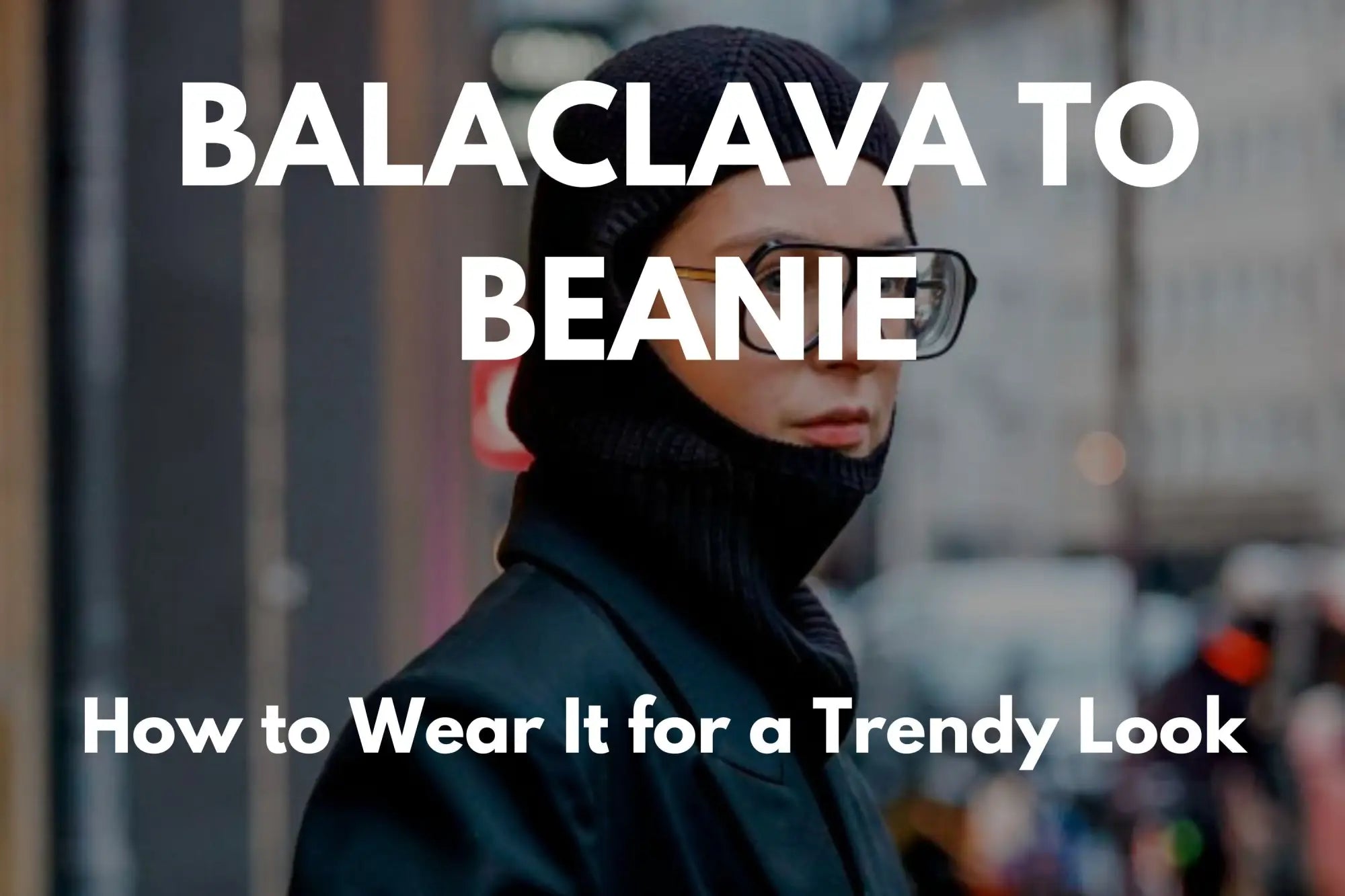In recent years, the balaclava has emerged as a trendy piece of headwear in the fashion world, sparking debates about its cultural significance and potential cultural appropriation. As a fashion journalist with a keen eye on streetwear trends and brands like Hustler Balaclava, I'm here to delve into this complex issue. The question looms: are balaclavas cultural appropriation, or are they simply a functional piece of clothing that has found its way into mainstream fashion?
TABLE OF CONTENTS
➤ THE HISTORICAL CONTEXT OF BALACLAVAS
➤ THE FASHION INDUSTRY'S EMBRACE OF BALACLAVAS
➤ THE CULTURAL APPROPRIATION DEBATE
➤ NAVIGATING THE BALACLAVA TREND RESPONSIBLY
➤ THE FUTURE OF BALACLAVAS IN FASHION
The Historical Context of Balaclavas 🏔️📜
To understand the controversy surrounding balaclavas, we need to first explore their origins and evolution through time.
Origins in Warfare
The term "balaclava" originates from the Crimean War, specifically the Battle of Balaclava in 1854. British troops wore knitted headgear to protect themselves from the bitter cold. This functional piece of military equipment was named after the battle site, now part of Ukraine.
Evolution into Sportswear
Over time, the balaclava transitioned from military use to become popular in winter sports like skiing and snowboarding. Its ability to provide warmth and protection from the elements made it a staple in cold-weather activities.
Adoption in Various Cultures
Balaclavas and similar face coverings have been adopted by various cultures for different reasons:
- In Middle Eastern countries, similar head coverings like the hijab, niqab, and burqa are worn for religious and cultural reasons.
- In some African and Asian cultures, face coverings have been used for protection against harsh weather conditions.
- In Western culture, balaclavas have been associated with both sports and, sometimes, criminal activities due to their face-concealing properties.
The Fashion Industry's Embrace of Balaclavas 🧣👗
In recent years, the fashion industry has taken a keen interest in balaclavas, elevating them from purely functional gear to haute couture statements. This transformation has led to discussions about cultural appropriation and the ethics of fashion trends.
Runway Appearances
Balaclavas have made appearances on catwalks during Fashion Week events in New York, Paris, and London. High fashion brands like Gucci, Chanel, and Vuitton have incorporated them into their collections, often with luxurious materials and avant-garde designs.
Streetwear and Urban Fashion
In the realm of streetwear, balaclavas have gained popularity as a bold fashion statement. Brands like Hustler Balaclava have capitalized on this trend, creating designs that appeal to young, style-conscious consumers looking to make a statement.
Celebrity Influence
Celebrities and influencers have been spotted wearing balaclavas, further propelling their popularity. This visibility has both increased the trend's reach and intensified the debate about its cultural implications.
The Cultural Appropriation Debate 🌍⚖️
The rise of balaclavas in fashion has not been without controversy. Many have questioned whether this trend constitutes cultural appropriation, particularly when worn by individuals from dominant cultures.
Understanding Cultural Appropriation
Cultural appropriation refers to the adoption of elements of one culture by members of a different culture, typically a dominant culture taking from marginalized or minority cultures. This can be especially problematic when the appropriated elements are used without understanding or respect for their original cultural significance.
Arguments for Appropriation
Those who argue that balaclavas represent cultural appropriation often point to the following:
- The fashion industry's history of appropriating styles from marginalized communities without proper credit or compensation
- The potential for balaclavas to be used as a form of "dress up" that trivializes the cultural or religious significance of similar headwear in other cultures, such as the hijab or turban
- The disconnect between the trendy use of balaclavas and their origins in military and working-class contexts
- Concerns about exploitation of Muslim women's dress and modesty practices for fashion's sake
Arguments Against Appropriation
On the other hand, those who don't see balaclavas as cultural appropriation argue:
- Balaclavas have a diverse history across many cultures and are not tied to a single marginalized group
- The functional nature of balaclavas makes them distinct from purely cultural or religious headwear like headscarves or veils
- Fashion often involves cultural exchange and the evolution of styles across different contexts
- The balaclava trend can be seen as a form of appreciation rather than appropriation when done respectfully
Navigating the Balaclava Trend Responsibly 🧭🛡️
As the debate continues, it's important for both consumers and fashion brands to approach the balaclava trend with sensitivity and awareness. Here are some guidelines for wearing and promoting balaclavas responsibly:
Educate Yourself
Take the time to learn about the history and cultural significance of balaclavas and similar headwear. Understanding the context can help you make more informed choices about how and when to wear them.
Respect Cultural Boundaries
Be mindful of the differences between balaclavas and culturally or religiously significant headwear like hijabs, turbans, or abayas. Avoid using balaclavas as a substitute for these items or in ways that could be seen as mocking or disrespectful.
Support Ethical Brands
Choose to support brands that are transparent about their design inspiration and manufacturing processes. Brands like Hustler Balaclava that focus on streetwear-inspired designs may be less likely to cross into problematic cultural appropriation.
Listen to Marginalized Voices
Pay attention to the perspectives of individuals from cultures that have traditionally used similar headwear. Their insights can provide valuable guidance on how to appreciate the style without appropriating it.
Consider Context
Think about where and how you're wearing a balaclava. What might be appropriate for a ski slope could be insensitive in a different setting, particularly in areas with large Muslim or Middle Eastern populations.
The Future of Balaclavas in Fashion 🔮🧥
As the fashion industry continues to evolve, so too will the conversation around balaclavas and cultural appropriation. Here's what we might expect to see in the coming years:
Increased Dialogue
The ongoing debate is likely to foster more open discussions about cultural exchange, appreciation, and appropriation in fashion. This could lead to greater awareness and more thoughtful approaches to incorporating diverse styles into mainstream fashion.
Collaborative Design
We may see more collaboration between mainstream fashion brands and designers from various cultural backgrounds. This could result in balaclava designs that more authentically represent and respect diverse cultural influences, including Islamic fashion and modest fashion trends.
Functional Fashion
As climate change affects global weather patterns, functional clothing like balaclavas may become more necessary in everyday life. This could shift the focus back to their practical uses while still maintaining their fashion appeal.
Diversity in Representation
The fashion industry is likely to face continued pressure to increase diversity in all aspects, from design to marketing. This could lead to more inclusive representations of who wears balaclavas and how they're styled, including models from different cultures and ethnic backgrounds.
Frequently Asked Questions about Balaclavas and Cultural Appropriation
| Question | Answer |
|---|
| Are all balaclavas considered cultural appropriation? | No, not all balaclavas are considered cultural appropriation. The context of how they're designed, marketed, and worn plays a significant role. Balaclavas used for their original functional purposes (e.g., for winter sports or cold weather protection) are generally not seen as problematic. |
| How can I wear a balaclava without being culturally insensitive? | To wear a balaclava respectfully, educate yourself about its history and cultural significance, choose designs that don't mimic specific cultural or religious headwear, and be mindful of the context in which you're wearing it. Supporting ethical brands like Hustler Balaclava that focus on streetwear-inspired designs can also help. |
| What's the difference between cultural appropriation and cultural appreciation? | Cultural appreciation involves learning about and respecting elements of another culture, while cultural appropriation often involves taking elements of a marginalized culture without understanding or respecting their significance, often for personal gain or fashion. |
| Can fashion trends ever be completely free of cultural appropriation concerns? | It's challenging for fashion trends to be entirely free of cultural appropriation concerns, as fashion often involves borrowing and mixing elements from various cultures. However, the industry can strive for more ethical and respectful practices by involving diverse voices in the design process and being transparent about inspirations. |
| How are fashion brands addressing concerns about cultural appropriation? | Many fashion brands are becoming more aware of cultural appropriation issues and are taking steps to address them. This includes hiring more diverse design teams, collaborating with artists from different cultural backgrounds, and being more transparent about their design inspirations and processes. |
In conclusion, the question of whether balaclavas represent cultural appropriation is complex and nuanced. While their origins are diverse and their functional purpose clear, their adoption by the fashion industry has raised important questions about cultural sensitivity and respect. As consumers and fashion enthusiasts, it's crucial to approach trends like the balaclava with awareness and consideration for their broader cultural implications. Brands like Hustler Balaclava, which focus on streetwear-inspired designs, may offer a way to enjoy this trend while minimizing concerns about appropriation. Ultimately, the key lies in education, respect, and open dialogue about the intersection of fashion and culture. By engaging thoughtfully with these issues, we can work towards a fashion industry that celebrates diversity and creativity while respecting the rich cultural tapestry that inspires it.







Leave a comment
This site is protected by hCaptcha and the hCaptcha Privacy Policy and Terms of Service apply.